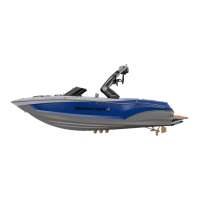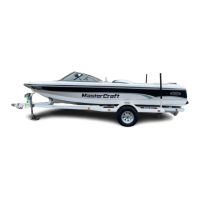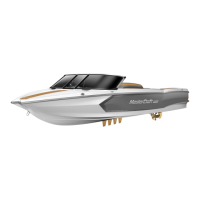37
/
2023 OWNER’S MANUAL
• Assume the Heat Escape Lessening Posture (HELP) position
taught within a Coast Guard-taught safety course. Information
about HELP is available online.
Immersion in water speeds the loss of body heat and can lead to
hypothermia, the abnormal lowering of internal body temperature.
If a boat capsizes, it will likely float on or just below the surface.
To reduce the eects of hypothermia, get in or on the boat. Try to
get as much of your body out of the water as possible. If you can’t
get in the boat, a PFD will enable you to keep your head out of
the water. This is very important because about 50 percent of
body heat loss is from the head.
It may be possible to revive a drowning victim who has been under
water for some time and shows no sign of life. Cases document
instances where victims have been resuscitated after extended
periods. Start CPR immediately and get the victim to a hospital as
quickly as possible.
Immersion suits will delay the eects of hypothermia in cold water
and are available through many retailers who specialize in sales
of marine products. The suits should be stored and maintained
according to the manufacturer’s instructions.
INFLATABLE LIFE RAFTS
An inflatable life raft can provide a survival platform for an
extended period of time. Be sure the life raft is large enough
for everyone on board when the boat operates o-shore. It
should have the appropriate emergency equipment pack and
should be professionally serviced periodically, according to the
manufacturer’s instructions. Coast Guard-approved life rafts must
meet a number of stringent material and performance standards.
ANCHORING
Anchoring is done for two principal reasons: first, to stop for
fishing, swimming, lunch or an overnight stay, or to keep a boat
from running aground in bad weather or as a result of engine failure.
When preparing to anchor, bring the bow of the vessel into the wind
or current. Place the engine in neutral. When the boat comes to a
stop, slowly lower the anchor. Do not throw the anchor over as it
will tend to foul the anchor or tangle line. When the anchor line has
been let out, back up away from the anchor with the engine in idle
reverse to help set the anchor. After it is firmly set, use reference
points (landmarks) in relation to the boat to be sure that the boat is
not drifting. Check the points frequently.

